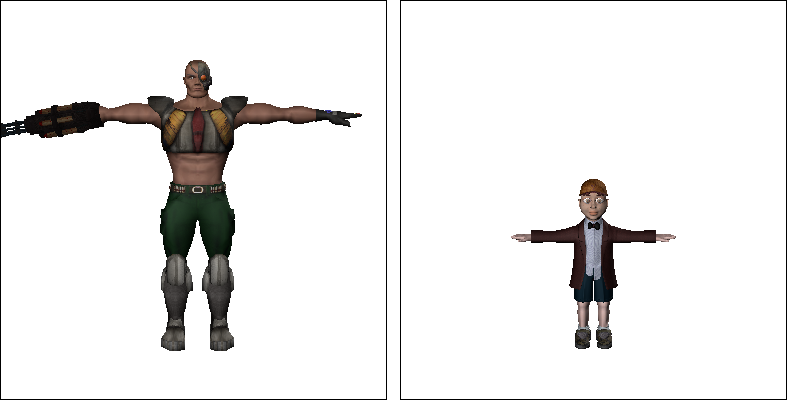All 3D character models have a rigid skeleton as their underlying structure in common: . The skeleton is covered by a skin (or mesh) on which textures, colors, facial, and body features are applied to distinguish the appearance of a model.
Although the characters in the following figure may look different, their underlying skeletons are similar.

Two models that look different can have very similar skeletons
Just like real skeletons, 3D skeletons contain a hierarchy of bones. In a real skeleton, these bones are connected by joints. Skeletal hierarchies allow the figure to rotate around each individual joint.
A skeletal hierarchy chain starts with top-level joints, and finishes with end effectors. For example, the following figure shows a common hierarchy for an arm.

Arm hierarchy A. Joint B. Bone C. End effector
When you animate a character in 3D software you are always animating the skeleton, regardless of the outer appearance of the character.
Animation data for a character is always stored on the skeleton of a model. When you import an animated model into MotionBuilder and you want to edit the animation, you must first plot the animation to a Control rig. To export animation, you plot the animation back to the skeleton.